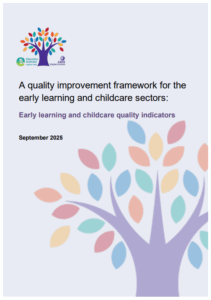Children experience high quality spaces p20 – Quality safety and maintenance of spaces
We recognise the importance of daily outdoor play and the benefits of this for enhancing learning and wellbeing. We support, facilitate and encourage children to explore and build independence. Children are supported to actively explore and learn about the wider world.
Nurturing care and support p45 – Nurturing care
We recognise the importance of supportive transitions and understand that their significance can vary for each child. We regularly assess each child’s individual needs and evaluate the effectiveness of our transition strategies. We ensure consistent relationships to support smooth transitions and minimise disruptions to children’s care and learning experiences
We ensure consistency in who provides a child’s care and support and how it is provided. Consistency in routines such as mealtimes, nap times and personal care provide our children with a sense of safety and security. We recognise these daily routines provide rich opportunities to connect with children and support their growth and development.
Nurturing care and support p47 – Personal Planning
Personal plans are tailored to each child’s individual strengths, needs and interests. We create meaningful plans with children and regularly review these to ensure plans are suitable and supportive.
Nurturing care and support p49 – Connections with families
Our connections with families increase their engagement in our service, positively impacting the quality of children’s experiences. We recognise, learn from, and build upon the strengths that families bring, while sensitively responding to individual needs and circumstances.


